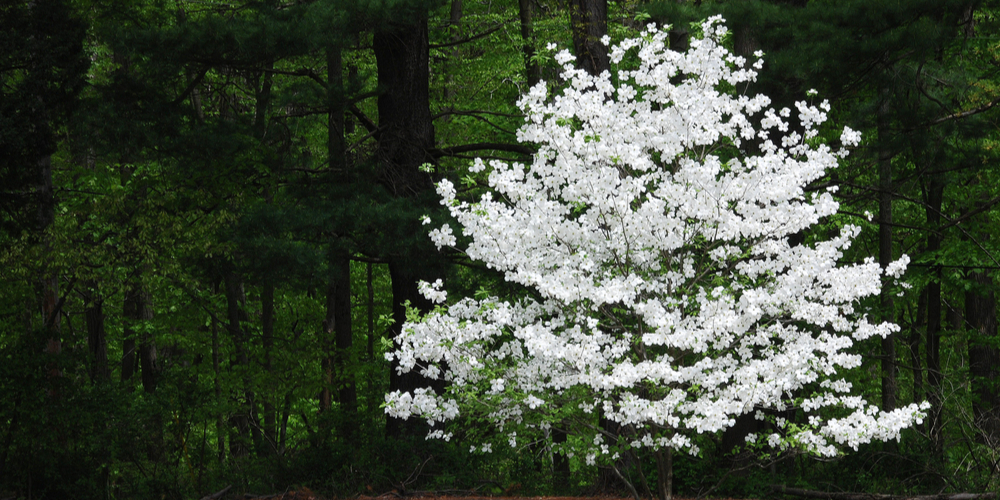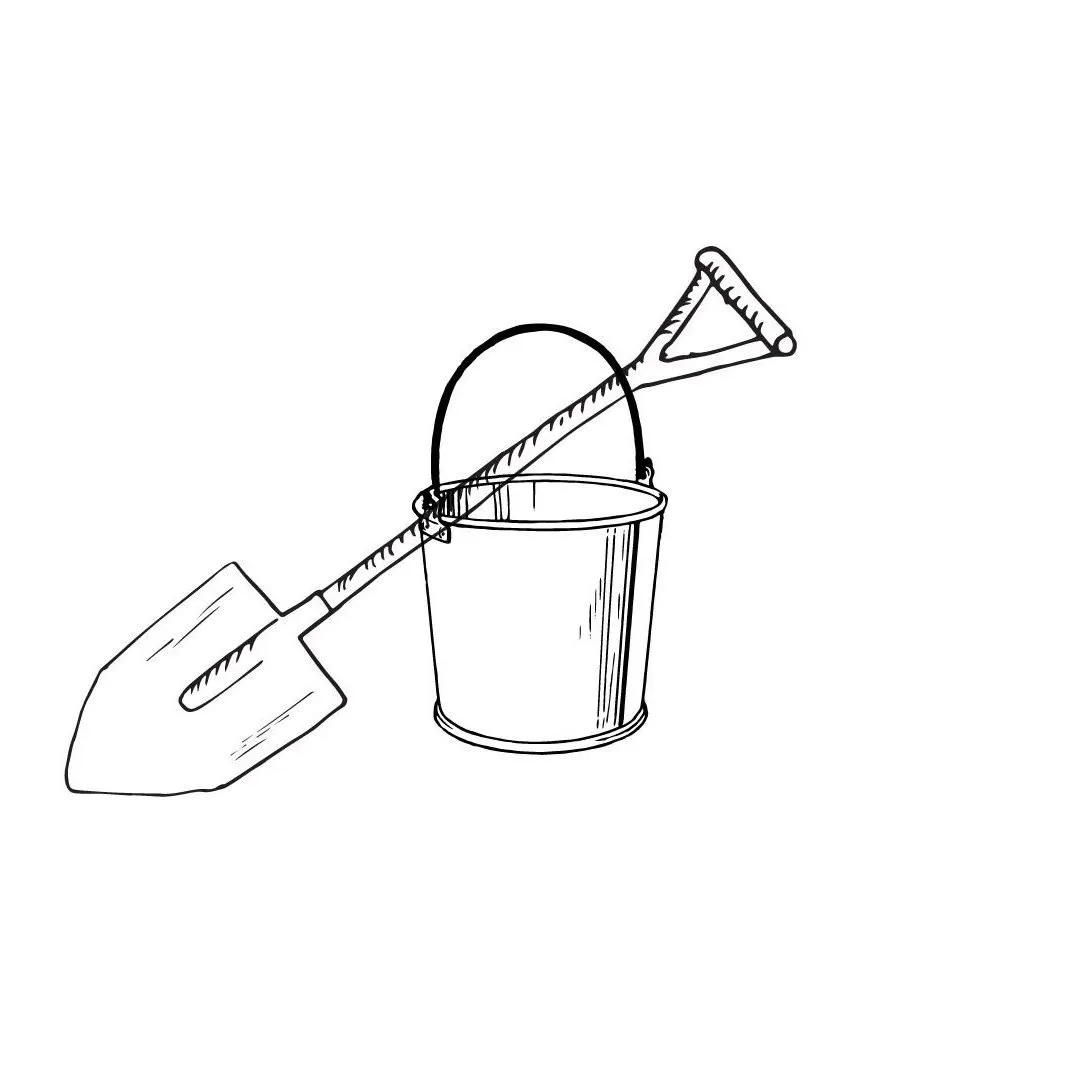Dogwood trees are a beloved and iconic ornamental tree in many landscapes. Known for their showy spring flowers, bright fall color, and attractive branching structure, dogwoods add charm and interest to yards and gardens year-round.
When adding dogwood trees to your landscaping, make sure they have enough room between them so they can grow to their full size and shape without being crowded. If you want your dogwood trees to grow well, this article tells you how far apart they should be.
Typical Spacing Guidelines for Dogwood Trees
Flowering dogwood (Cornus florida), kousa dogwood (Cornus kousa), and Cornelian cherry dogwood (Cornus mas) are some of the most common types of dogwood trees. They grow to be 15 to 30 feet tall and have a similar spread.
To accommodate their growth habit, experts recommend spacing dogwood trees around 20 feet apart when planting in an open landscape This gives them adequate room to spread and develop their natural rounded canopy without infringing on each other
Planting dogwoods 20 feet on-center creates a nice visual separation between each specimen. Closer spacing of 10-15 feet can work but may result in crowding as the trees mature.
Factors Affecting Dogwood Spacing
While 20 feet is the standard recommended spacing, the optimal distance for dogwood trees can vary slightly based on:
-
Mature Size: Smaller cultivars may only need 15 feet, while larger kousa varieties may require 25 feet or more. Check expected mature height and width.
-
Pruning: Dogwoods can be pruned on purpose to keep their tight shape. This lets you space them closer if you want to, but you should still leave at least 10 to 15 feet between each tree.
-
Design Layout: Planting in offset rows or triangular patterns permits slightly closer spacing than linear rows. But avoid overcrowding.
-
Growing Conditions: Dogwoods planted in prime conditions with rich soil and proper care can thrive with tighter spacing. Those in poorer soils will likely need more room.
-
Privacy Uses: Planting dogwoods tightly as a hedge or screen allows only 5-6 feet between trees in a single row, as they’ll eventually grow together.
Spacing for Other Dogwood Species
The above guidelines refer to the common ornamental landscape dogwoods. Other species have different size ranges:
-
Cornelian cherry dogwood: 15-20 feet apart
-
Red osier dogwood: 5 feet apart, or closer for screens
-
Silky dogwood: 5-10 feet apart
-
Pagoda dogwood: 10-15 feet apart
-
Gray dogwood: 10 feet apart
Regardless of variety, allow enough space for air circulation, light penetration, and mature growth without being crowded.
Design Tips for Planting Dogwood Trees
In addition to proper tree spacing, consider these design tips for an appealing layout:
-
Use offset or staggered rows rather than linear planting for a natural look.
-
Plant dogwoods in small groups of 3-5 rather than as lone specimens for greater impact.
-
Surround with lower-growing plants like azaleas, ferns, and hostas.
-
Repeat groupings of the same variety or alternate different dogwood species.
-
Combine varieties with different bloom times for extended spring color.
With the right spacing and creative design, dogwood trees can enhance any landscape with multi-season beauty! Monitor growth over time and thin or transplant any trees that become too crowded.
Adjusting Dogwood Tree Spacing in the Landscape Over Time
Proper tree spacing is crucial when initially planting dogwoods. But as they grow over the years, you may need to make adjustments to their placement to prevent overcrowding issues.
Signs that dogwood tree spacing has become too tight include:
-
Branches rubbing together or crossing between trees
-
Canopies that merge together with little light penetration to lower branches
-
Reduced vigor, stunted growth, and lack of flowers
-
Increased disease and pest problems due to lack of air circulation
To address tight spacing, consider:
-
Selectively removing some dogwood trees to open up the area
-
Pruning branches regularly to contain size and promote air flow
-
Transplanting dogwoods to a new location further apart
-
Switching to a single specimen dogwood tree rather than grouped plantings
With attentive spacing management, dogwood trees can provide enduring beauty in the garden for many years to come.
Key Takeaways on Dogwood Tree Spacing
-
Space standard dogwood trees about 20 feet apart at planting for best growth.
-
Allow 15 feet for dwarf varieties and 25+ feet for larger species.
-
Tighter spacing of 10-15 feet is possible with pruning or design layout.
-
Give other dogwood species like Cornelian cherry 10-20 feet spacing.
-
Adjust spacing over time if trees become crowded.
Dogwood trees need room to grow, and when they’re spaced out correctly, they look nice in the landscape. When choosing planting distances, think about the plant’s expected mature size, the conditions of the site, and the designer’s goals. Dogwoods will grace gardens for years to come if they are spaced out correctly.

How to Plant a Dogwood Tree: Materials Needed
- You will need two sets of hands and someone else to hold the tree straight up when you plant it.
- A bucket or other container to soak the tree roots in water if the tree doesn’t have any roots already there.
- A shovel or spade for digging
- Tree guards for protecting against animal damage
- 1-2 Gallons of Water

- The dogwood tree will either come in a pot or bare root, which means it will not have any soil on it. Do not put the tree in the shade. Instead, take it out of the box it came in and put it somewhere cool (not freezing). g. your garage.
- As soon as you get a bare-root tree that has been shipped for more than four days, put it in water for six to twenty-four hours and plant it right away.
- If you have to wait more than a week to plant the tree because it is bare root, make sure to spray the roots with water every day. The roots will stay healthy and wet if you keep them in wax paper. The trees can stay in a cool, shady basement or garage. Then soak in water for 6-24 hours and plant afterwards.

You should prepare the planting area before planting the tree.
- These plants do well in soils that have a pH of about 5. 5 to 7. Soil that is too wet and doesn’t drain well will hurt them because they like it when the ground is moist and drains well.
- You can test the soil for acidity and drainage before planting. There are easy, cheap ways to do this. Most soils fall in the 6. 0-7. 0 pH range.
- You can add organic matter like compost to your soil to make it more nutritious, but you don’t have to. Or add lime to balance the acidity if needed.
- Till the soil so that the nutrients are mixed in and the soil doesn’t get too packed down. This will help the roots grow well.

- When you plant the tree, you want the top of the root ball to be just above the ground. This will make a small mound around the tree.
- To give the roots of a tree that came in a pot some room to grow, dig a hole that is about twice as wide as the pot. Since you want the top of the root ball to be above ground level, the hole should be about a quarter of the way deep as the pot.
- If the tree is bare roots, you need to dig a hole that is twice as wide as the root ball, or the circle of roots. The depth can be about the same as the root ball.

- The tree should be carefully taken out of its pot and put in the middle of the hole if it is in one. When you put it down, make sure the root ball is just above the ground.
- If it’s bare root, make a mound of soil in the hole first. This way, when you put the tree down, the roots will slope down and spread out, leaving the tree above ground. If the roots start to twist, cut them back. This will enable the tree to spread its roots further.

- If you are planting from a pot, just fill in the soil until it is level with the ground.
- Putting the nutrient-rich topsoil you dug out near the roots of a tree that is held vertically and bare root is helpful. After putting half of the soil around the tree, gently press it down with your feet to get rid of any air pockets. Do not put compost or fertilizer in the hole where the roots are; this will hurt the tree. For the roots to stay hidden, put the rest of the soil on top and press down on it many times with your foot. For the tree, there should be a small hill above the ground.
- If the dogwood tree is on a slope or in a place that doesn’t get enough water, build a wall around it. Make a 2-foot raised edge of soil around the tree to keep the water in.
- Put mulch over the top of the soil near the tree to keep the water in the soil. Moreover weeds are less likely to grow. But the mulch shouldn’t touch the tree bark; it should be about 2 feet away.

- As soon as you plant the tree, give it about one to two gallons of water. If the soil goes down, add more soil.
- For the first year, water it once or twice a week with one to two gallons of water. Once the tree is well-established, you should only water it when it is stressed or during a drought.
- Also, make sure the tree gets enough water in the winter to keep it from drying out and dying. This happens when the leaves lose more water than the roots take in.

- Put a tree guard around the trunk as soon as you plant the tree. Rodents and rabbits will eat the bark off of the dogwood tree and kill it, so this keeps them away. The tree guards should let air flow in. The best defense against mice is a mouse guard that wraps around the bark. We didn’t suggest using them in the summer, though, because bugs can live between the mouse guard and the bark.
- Dogwood trees can be hurt by cold weather and strong winds. Planting in a wind tunnel is not a good idea, especially in the winter. Put up hedges or evergreen trees to block the wind.

How to Grow a Dogwood Tree After Planting
After you have mastered how to plant a dogwood tree, you will need to take care of it. Fortunately, the dogwood tree is pretty easy to grow. Here are some basic information on watering and pruning a dogwood tree.
How to Plant and Care For Your Dogwood Tree
FAQ
How close can I plant dogwood trees to each other?
Plant Dogwoods 10-15 feet from other trees to reduce competition and promote growth.Oct 10, 2024
What is the hidden downside to planting a dogwood tree in your yard?
When dogwoods already have leaf spot, twig blight, canker, or a disease that kills them like dogwood anthracnose, they are more likely to get pests. Vulnerabilities like these make dogwoods hard to keep alive, plus they’re fussy about sunlight and water.
What month is best to plant a dogwood tree?
The best time to plant a bare-root dogwood sapling is in spring before tree growth starts. They can also be planted in the autumn but it should be done 4–6 weeks before the ground freezes.
Where is the best spot to plant a dogwood tree?
Ideally, and especially in the Southern U. S. For the best growth and health, dogwood trees do best in spots that offer shade or filtered sunlight in the afternoon. Morning sun with afternoon shade or filtered sun is perfect.
